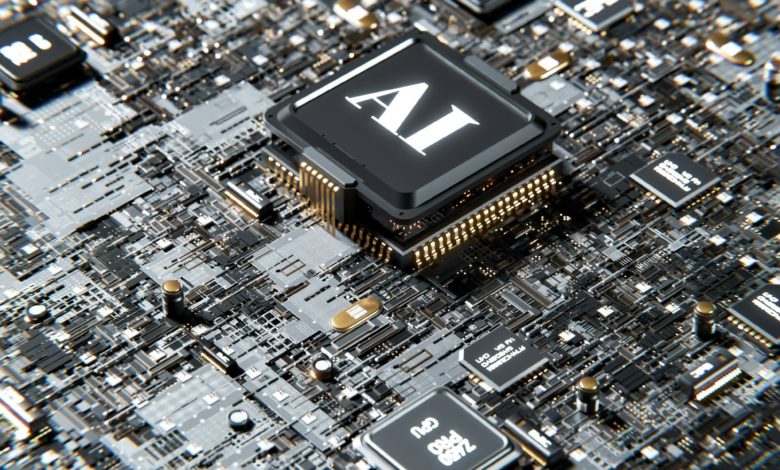Micron Rises on Strong Earnings, But AI Growth Expectations Keep Investors Cautious

One of the top-performing chipmakers of 2025, Micron Technology Inc. (NASDAQ: MU), had a mixed reaction from investors following its latest quarterly earnings report and outlook for the upcoming quarter. Despite beating expectations for Q3, Micron’s stock still took a hit after the company’s conference call, where analysts and investors expressed concerns about the future growth of high-bandwidth memory (HBM), a main component in artificial intelligence (AI) computing.
While Micron has benefited from the rising demand for AI-driven technology, the company’s guidance for Q4 did not meet the high expectations investors had in mind. After initially spiking by 7.7% following the earnings report, Micron's stock reversed and dropped by 2.3%, dropping to $124.30 per share. This fall overshadowed an otherwise strong quarter and raised questions surrounding the sustainability of the company's growth momentum in the second half of the year.
Market Reaction to Micron’s Earnings Report
Micron’s Q3 performance had solid growth, with a 37% year-over-year increase in sales, rising to $9.3 billion, exceeding analyst expectations of $8.85 billion. Earnings per share came in at $1.91, well above the $1.60 estimate. The company’s fiscal fourth-quarter forecast also looked promising, with projected revenues of $10.7 billion, beating analyst projections of $9.89 billion.
However, despite these impressive numbers, investors have been concerned about the company’s high-bandwidth memory (HBM) growth. While HBM is crucial for AI computing and driving Micron's sales surge, the company did not provide the runaway growth that some had hoped for, particularly in the rapidly expanding AI sector. Analysts, like Matt Bryson from Wedbush Securities, noted that the sales growth was in line with previous expectations, and some feared that Micron’s potential in AI may not be as explosive as initially expected. Micron’s CEO, Sanjay Mehrotra, addressed these concerns during the conference call, reassuring analysts that the company’s AI segment would continue to see solid growth. However, the lack of a clear, aggressive growth trajectory for HBM led to the muted reaction.
Key Areas Driving Micron’s Growth
Despite the concerns about HBM, Micron is still experiencing growth in other sectors, mainly in AI, electric vehicles (EVs), and gaming chips. The rising complexity of AI software is driving demand for larger and faster memory components, such as HBM, and Micron is positioning itself to be a key player in this market. Dan Morgan, senior portfolio manager at Synovus, highlighted that Micron is diversifying its offerings to capitalize on these emerging markets, which could provide a buffer if the AI sector’s growth dips.
These initiatives have played a significant role in Micron's 51% gain this year, making it one of the hottest stocks in the semiconductor industry. However, the company’s overall outlook suggests that it will need to continue diversifying its product range and navigating the competitive landscape to keep its momentum.
Challenges and Risks Ahead for Micron
While Micron has been a leader in the memory chip market, challenges remain. The ongoing trade tensions and tariffs could impact the company’s ability to scale its operations globally. Additionally, the level of competition in the semiconductor industry, particularly from other players in the AI and memory sectors, could put pressure on Micron’s margins and pricing power.
Micron’s recent quarterly performance has shown that, despite the demand for AI memory, concerns remain about whether this growth will continue. Investors are cautious about how the company plans to manage its growth trajectory and how much of the market it can capture, especially as new competitors enter the space. Analysts are focused on Micron’s ability to navigate both the AI sector's demand fluctuations and the broader economic environment, including potential changes in US monetary policy and geopolitical risks.
Looking Ahead
Investors will be focused on Micron’s ability to sustain its growth trajectory in the AI and high-bandwidth memory markets. While the company has had impressive results in these areas, questions remain around whether demand will continue to grow at the pace investors anticipated. The fourth-quarter forecast, with projected revenue of $10.7 billion, should provide more clarity on Micron’s ability to meet expectations and manage margins amid increasing competition.
Additionally, as Micron continues to diversify its customer base beyond traditional sectors like gaming, the company will need to navigate the potential impacts of geopolitical tensions, such as US-China relations, and changes in global chip supply chains. How well it can sustain demand across these various sectors will be key in determining the stock’s performance moving forward.



